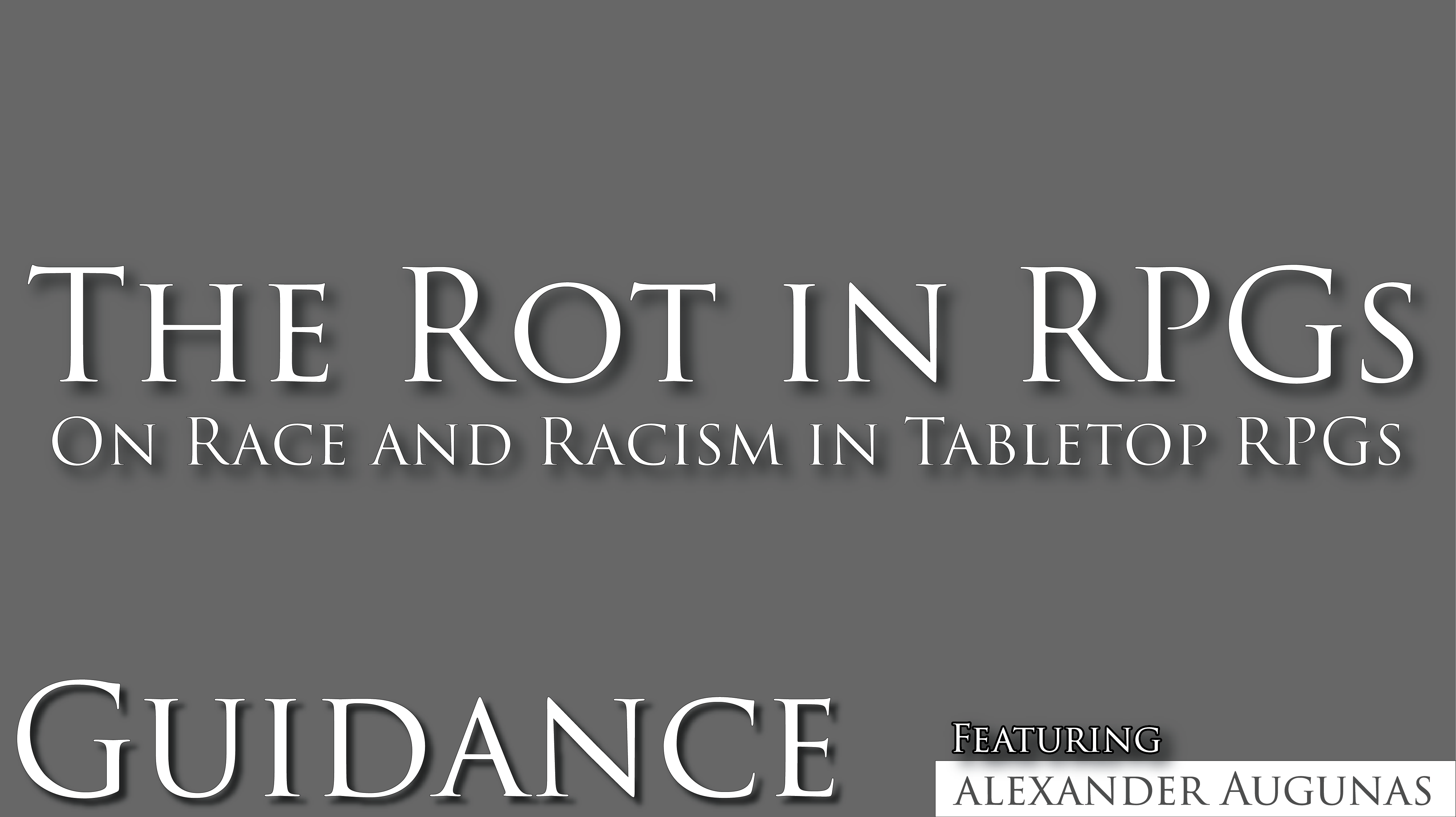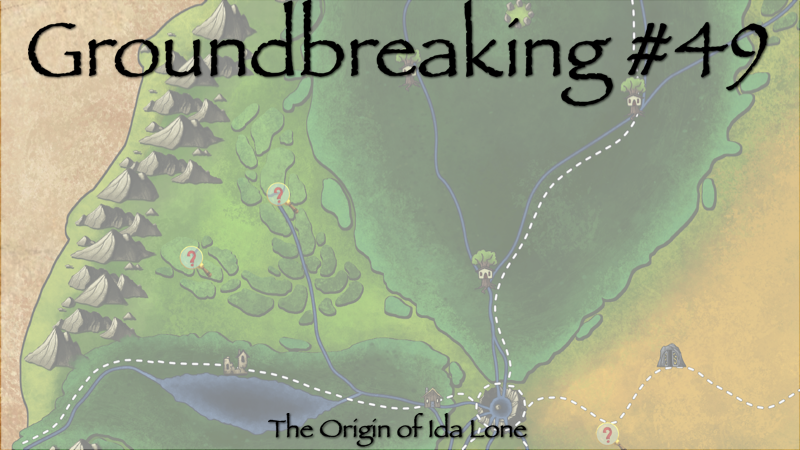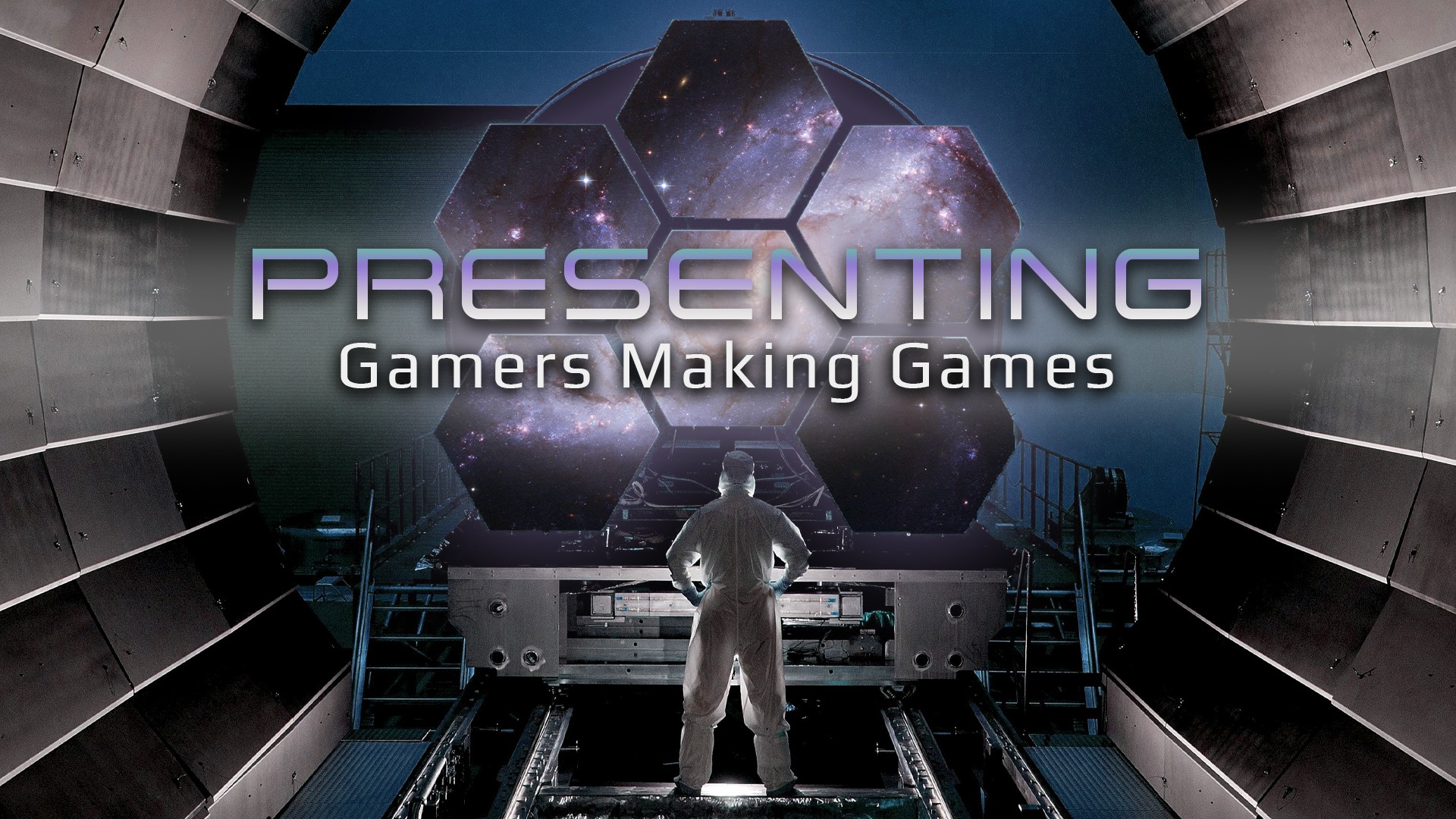Hello Know Direction readers! I’m Alexander Augunas, and I’m here today with a topic many people don’t want to talk about: racism and how it festers within the Tabletop RPG culture. Specifically, I’m going to be talking about racism in our portrayal of fantasy ancestries and species. Now, you might not know where this topic is coming from, so let me inform you. On May 25th, 2020, Minneapolis resident George Floyd was murdered by local police via asphyxiation. Since that happened, I’ve been trying to figure out what I wanted to say about it, what I wanted to do with my platform. I’ve been overdue, and I apologize. On June 17th, 2020, Wizards of the Coast (publishers of Dungeon and Dragons and by far the largest and most influential publisher of Tabletop RPGs in the world) put out a statement talking about their commitment to further separating the notion of race from morality in Dungeons and Dragons. This is a good first step that, naturally, as a Network comprised of Pathfinder fans, we’ve mostly grown accustom to over the past year or so since Pathfinder 2E’s release, wherein Paizo went a step further than this and removed racist concepts both from their game world and their rules. (I’m looking at you, “race.”)
So, if many of the gamers in our Network are comfortable with this change, why am I writing an article about it? Well for starters, the internet is a toxic place where not every person is as inclusive as the Know Direction Network, and an article on the subject has value for that reason alone. But in addition to that, I think it’s worth exploring why something is racist so we as a community can do a better job identifying it in the future. Before I start, however, I feel that it’s important for me to mention that while I have some experience regarding the psychology of racism, I’m ultimately not a person who’s experienced a lot of this first-hand and am by no means an expert on the topic, I suggest that you use my article both to serve as a springboard for own reading, preferably featuring people of color and psychologists who’ve studied the psychology of racism. In fact, as I’m writing this I’m currently reading a book called White Fragility on my Kindle; check it out, I’m only a few chapters in so far but it’s a very good read on the subject.
Speaking of subjects, let’s get started!
Defining Racism
Before we get too deep into this discussion, I think it’s worth making sure that we have a strong definition of racism so we know what we’re talking about.
Racism is:
- The belief that different groups of humans are superior to others based on differences in genetics and/or behavioral traits corresponding to social perceptions of each group’s physical appearance.
- Prejudice, discrimination, or antagonism directed against other people due to the aforementioned beliefs, both at an individual and a systemic level.
So with these definitions, lets take a look at some specific elements.
- Racism based on genetics tries to explain differences in physical or cognitive ability between people as a product of their ancestry.
- Racism based on behavioral traits tries to explain differences in behavior between people as a product of their ancestry.
- Social Perception is the study of how people form opinions about one another.
- Individual racism refers to a specific person’s racist beliefs or assumptions.
- Systemic racism refers to racist beliefs that are encoded into a society’s functioning. It can be further broken down into institutional racism (discrimination that derives from individuals in power enforcing the racist dictates of authority figures) and structural racism (discrimination that derives from inequalities in how society operations or works for its people).
This is a lot to take in, and not all of this probably makes sense to those unfamiliar with the philosophies of racism. Basically, racism is based on how one group of people perceive another without anything other than anecdotal evidence and manifests either as thoughts or acts committed by an individual or by the inner workings of a society.
There’s also one REALLY important idea that we need to understand when we talk about racism as it pertains to the WWW, the “White Western World,” and that’s the idea of white fragility. Racism — and by extension, racists — have a very nefarious trick that they’ve been using for over a century to silence conversations about racism, and that trick is basically the transformation of the discussion of racism into a moral issue. Before I explain further, let me confirm something to all the white people reading this article right now. At some level, you’re racist. I am too. How does that make you feel? Did you shrug it off? Feel a little uncomfortable? Did reasons that I’m wrong immediately appear in your mind, either as a flood that caused you to stop reading my article for a few moments (or longer), or as a nagging itch in the back of your brain? Maybe as a cute laugh that you just did. “He’s not talking about me.”
I am. And the fact that most white people react how I just described is proof of it. That reaction is white fragility, the most insidious tool of racism. It’s a complex idea that can be basically described as white people’s complete and utter inability to handle being called racist, because for us being a racist is morally repugnant. I can very clearly remember a time when I was little, maybe 5 or 6, and our neighbors moved in. They’re a wonderful family of Jamaican ancestry, and they were the first black family I had ever seen. One day after I had met them, while I was in my backyard with my Mom, I turned to her and asked her, “Why are they black?” My mother got really hushed, as if she were worried that our neighbors would hear what I had said. She replied to me, “Never ask that again! You can’t ask people about being black.” And so, for many years, I never did.
That was my first experience with the idea of white fragility. I’ve never spoken with my mother about the incident, but looking back on the memory now, what I remember was panic. She was worried that she had did something wrong, that her 5 year-old son was a racist and was trying to correct it. Even though I hadn’t done anything wrong, she was so worried about the perception of having a racist son because that would mean other families would assume she was a racist herself. And—here’s the key idea—to most whites, being racist is a character flaw that cannot be corrected. Many white people view racism as being a thing that “bad people” do or are, so they tell themselves that they aren’t bad, so they can’t be racist. They never stop to really question themselves or their institutions. That’s how events like the murder of George Flyod end up blindsiding so many white people, or why so many white people get upset when people claim institutions are racist. Analyzing those institutions forces white people to come to terms with the idea that they hold inherent advantage simply because of how they look. Police socially respond to white people differently then people of color, and as we noted before, racism is based entirely on social perceptions.
Racism is wrong. It is wrong to look at another human and make assumptions about them physically, cognitively, or behaviorally based on nothing but their ancestry, on the color of their skin. But we need to move past the idea that racism is a rot that cannot be cleansed, and we need to observe the fact that a system built by racists enforces those racist beliefs upon its people. This is true in society, it is true in tabletop RPGs, and it cannot change unless we look those truths in the eye, understand where they came from, and change them.
Now, let’s begin.
In the Beginning: Tolkien, Orcs, and Racism
Tolkien, the writer of the Lord of the Rings trilogy, is not the first fantasy author, and certainly not the last. But when analyzing modern fantasy Tabletop RPGs, we need to recognize that most of these works are derivative in some way from Tolkien. His writing has shaped modern perceptions of things like elves and orcs and introduced beloved ideas like hobbits, the foundation of TTRPG’s halflings.
Tokien was an exceptional man. He was a soldier who fought against fascism in Europe, a linguaphile who literally invented his own language, and an author of a series of novels that would capture the imagination of millions for generations. He was also the product of a racist, white Western system and whether or not he himself was racist, institutional racism permeates Tolkien’s writings. A great place you can see some of this is reflected in the very structure of Middle-Earth, Tolkien’s so-called Morality Map.
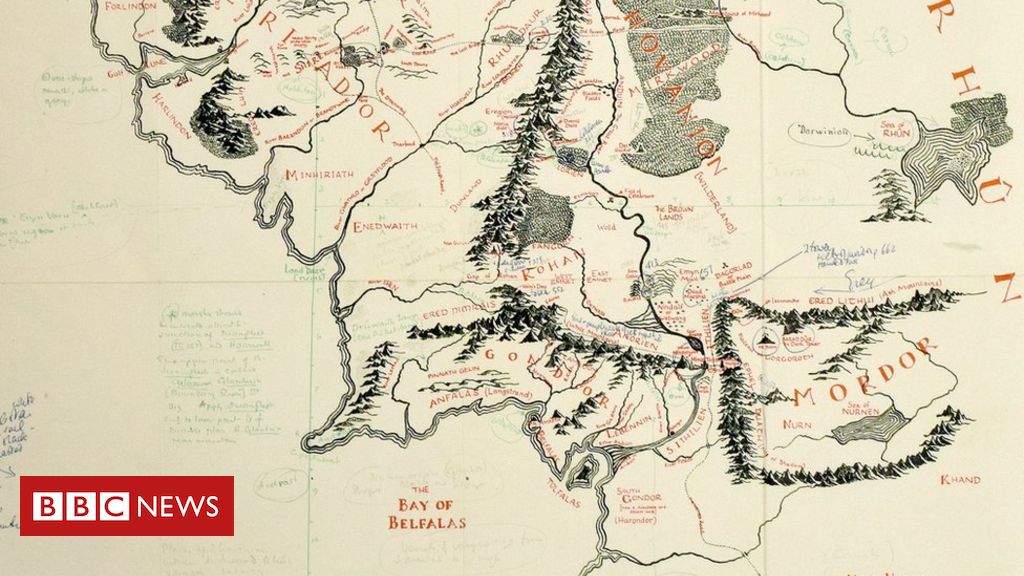
In Tolkien’s works without fail, the “more good” something is, the further West on his world map that place is. The “more evil” something is, the further East that place is. Don’t believe me? Gondor (the kingdom of men), the elf nations (Lindon, Doriath, Lorien), and the Shire are all located towards the West of this map, with most of the elf nations closer inland (the “center” of the region) reflecting their aloof disposition. Mordor, the realm of the orcs, is located to the East. A West-versus-East battle, eh? Well, surely Tolkien didn’t do something outlandish like base his orcs on any Asian cultures ri—
In a private letter, Tolkien describes orcs as: “squat, broad, flat-nosed, sallow-skinned, with wide mouths and slant eyes: in fact degraded and repulsive versions of the (to Europeans) least lovely Mongol-types.” (Carpenter, Humphrey, ed. (1981), The Letters of J. R. R. Tolkien, Boston: Houghton Mifflin, ISBN 0-395-31555-7)
Oh.
For the record “sallow” is a shade of muddy yellow, racists often refer to people of Asian ancestry as having yellow skin, and a mongol is a native or inhabitant of Mongolia, an Asian country located due north of China. Pretty damning, if I say so myself.
But, then again, Tolkien does paint a story where people of different ancestries (humans, elves, dwarves, and hobbits) need to work together in order to overcome a dangerous enemy.
Oh, you want ANOTHER letter? Well, okay…
In The Two Towers, the character Treebeard says, “It is a mark of evil things that came in the Great Darkness that they cannot abide the Sun; but Saruman’s Orcs can endure it, even if they hate it. I wonder what he has done? Are they Men he has ruined, or has he blended the races of Orcs and Men? That would be a black evil!” (The Two Towers, Lord of the Rings Book 3, Ch. 4, “Treebeard”)
Oh. OH. So, Tolkien privately compared orcs to mongols, an Asian ethnic group, and then added to his book that it would be a “black evil,” which not only has issues because associating blackness with evil is also racist, but it’s also directly stating that it would be evil for the Men (who are all coded as white Europeans, remember) and Orcs (who Tolkien associates with Mongolians) to blend. And, you know, maybe I’m pedantic but another word for “blending” is “mixing….”
But hey, I’m sure none of this affects our hobby, right?
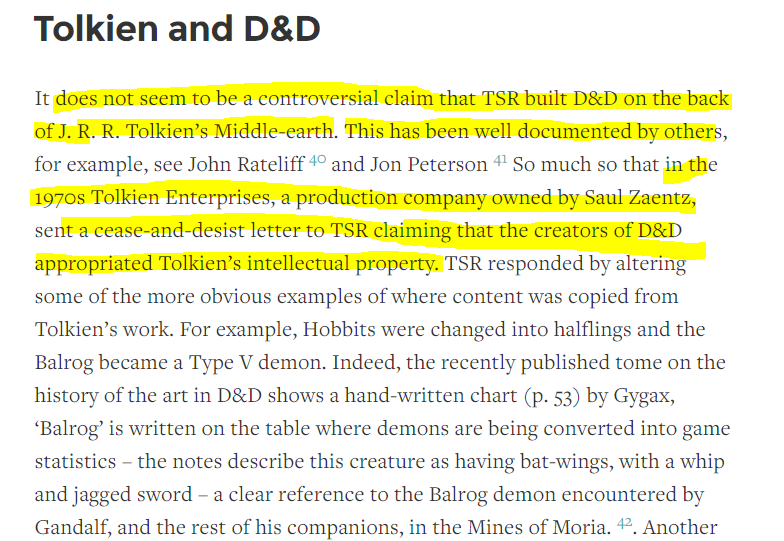
Oh $#%^.
A Rotted House Built Upon a Fetid Swamp
So yeah, Gary Gyax definitely based a ton of Dungeons and Dragons off of Lord of the Rings and was a product of the same systemic racism as Tolkien (Surprise!), basically every one of Tolkien’s ideas that’s rotten found its way into D&D, and for good measure he added his own! Let’s take a look at some of the problems D&D has or has had, shall we?
Orcs
Orcs are traditionally tribal or clan-based (likely stemming from the Medieval mongolian clans of Asia) who are berskers, violent, and above all else, irredeemably evil to the point where the game has historically stated that most half-orc children are the result of nonconsenting sex usually instigated by the orc. Even after wiping away some of Tolkien’s racism literally just painting orcs green, slapping them on the butt, and saying, “This baby is now so not-racist!”, orcs remain incredibly racist. They’re typically portrayed as tribal savages who are incapable of having larger societies beyond simple family structures, which is still a stereotype that many Mongolians face today due to their nomadic traditions.
Drow
Drow are a creation wholly of Gary Gygax, and oh boy are they famously racist! Drow have been traditionally depicted as evil elves who despite everything good and wonderful about their surface kin. And oh yeah, before Paizo came along their skin was black. They were also notorious torturers and slavers.
Not only are they basically identical to elves, who are presented as “always good,” in every way (except they’re black), but they’re also notoriously evil and cruel, favoring things like torture, slavery, murder, and more. Their matriarchal society is also one of constant distrust and backstabbing, where people get on top by being the cleverest or the most powerful. There is a lot wrong with this portrayal, but some of the big ones include the idea that a group of dark-skinned people would naturally gravitate towards evil (compared to their fair-skinned cousins, who are portrayed as usually good), the idea that a matriarchal society would also inherently lean towards evil, and the idea that a predominately black society would exalt in slavery (more on that later).
Gnolls
Gnolls are partially a Gygaxian concept; they’re ravenous hyenafolk who are spawned from fatten hyenas who dined upon the flesh of a demon lord and became mindless servants to that entity. But the notion of hyenas who could assume human shape is a real folklore myth in Africa called boudas (it’s less of a anthromorphic hyena thing and more of a witch who turns into a hyena thing). They’re seen as demon worshipers, usually dressed in ragged skins and armors with very basic weapons, incapable of real society beyond the “pack” which is basically portrayed as a tribe, and of course they like to eat people. Oh, and hyenas are from Africa and gnolls are often coded as African. (I talked a lot more about the problems with gnolls a few weeks ago. Check it out!)
Vegepygmy
Vegepygmies are short humanoids who are born from mold that transforms other creatures into these vaguely humanoid plant monsters. So, what’s the problem? A “pygmy” is literally an African ethnic group that’s known for below-average heights (vegepygmys are Small) that has long been stereotyped as being cannibalistic, mindless, and overall evil with weird fetishes and trinkets. Just like vegepygmys! It’s really gross.
I picked four examples of racist ideas in Dungeons and Dragons, but there’s a lot more if we really took the time to dive into them. However, I want to stop for a moment and talk some common, racist thems that plagues these ancestral groups.
The Brute Caricature
The brute caricature is a stereotype that was (and still is) commonly applied to black men. It’s the idea that the brute is an innately savage, animalistic, destructive criminal who deserves punishment, even death. They’re often described as hideous, terrifying, and predatory, and you’re probably thinking that this sounds a lot like how games portray orcs and gnolls. And you’d be right! This is a stereotype that is applied to basically every “always evil” ancestry in Tabletop Roleplaying Games; its basically the monstrous “license to kill” card, something that we see applied to black people as recently as a month ago at the start of the George Floyd riots.
Reverse Racism
Reverse-racism as its usually applied refers to the idea that acknowledging and trying to change systemic racism is inherently racist against white people. The idea is commonly applied to things like Affirmative Action or diversity hiring, which states that organizations “hired a black person to fill a quota,” which is then perceived as discrimination against whites based on a social perception. This is bullshit because it’s an example of white people make the outcome (them not getting a job) about themselves rather than about minority groups. Programs like affirmative action exist so that black people can overcome social perceptions that would prevent them from finding employment or gaining access to certain opportunities. Affirmative action and similar policies don’t take away opportunities from black people, and the notion that they do is racist because it frames the issue as if the opportunity were being taken away from a white person who deserves it more; the implication is that the black person is inferior to the white person and is taking something they have no right to.
Applying the idea of reverse racism to the ancestries mentioned above (drow and gnoll), note that both of these races are black coded in some way (drow have black skin, gnolls are based on an animal from Africa and are loosely tied to African mythology). Both of them are portrayed as slavers: drow and gnolls are infamous for slavery; gnolls in particular run the slave trade from a city located in the fantasy Africa of Pathfinder’s Lost Omens campaign setting.
This was actually a common argument of white slave owners in the 1700s and 1800s; “If they could, these black people would enslave us right back!” The fact that drow and gnolls are coded this way and, moreover, and described this way universally is a form of reverse racism, which is itself racist.
Othering
Every single one of these ancestral groups also has another issue—in being presented as always evil, they are presented as the Other. Othering is a concept where an individual or system establishes a discriminatory social perception in an effort to essentially establish racism. When othering occurs, its usually for the specific purpose of justifying some sort of action between You, the group you identify with, and The Other, the group that isn’t your group.
A great example would be during 9/11, where Middle Eastern people (specifically followers of Islam) became The Other. According to the authority, they attacked Us, so We had to retaliate against Them. It was Us against Them. American versus Muslim.
The concept of Othering is usually used to incite violent and hatred towards another group, justified in the idea that they’re The Other. When we’re talking about history, think of the acts of violence committed against Muslims during 9/11. Think of the innocent Japanese-American citizens thrown into Japanese interment camps in the US. The innocent lives ruined during the Red Scare, when everyone was out for blood in a communist witch-hunt. The innocent women murdered for suspect of witchcraft in Salem. The village of orcs slaughtered you slaughtered for gear and XP for simply being near the road you were traveling on. They don’t matter. They’re not Me. It’s Me versus Them. They’re the Other.
It’s inherently racist, and it teaches us that these ancestral groups are subhuman, which is a problem when your game specifically codes orcs like mongols, Africans like gnolls, blacks like drow. Because in coding the fantasy people as the Other, you’re also coding the real-world people they’re based on as the Other too.
Why Race is Racist
The final thing I want to talk about is the concept of race as it pertains in fantasy RPGs, and why it’s racist. Race is a social construct. It’s the idea that there are different “breeds” of humans based on physical traits, ancestry, and geographic location. Science has proven that the physical traits that make us look different from each other account for less than a percent of our genetic code. And yet the idea of race persists, and it’s an idea that has hurt millions across history and continues to hurt millions more today. And that’s where the issue with the term comes in. It doesn’t matter that games are trying to come up with a “fantasy” way to say the word “species.” It doesn’t matter that race as we know it doesn’t exist in these games—the word itself is poison. It’s a venom that reminds people who’ve suffered its existence of the pain they’ve endured, of the othering that affects them and their families every day. The concept is the problem, but usage of the term as a game mechanic perpetuates the concept simply by keeping the word in use. That’s why it’s so important that Paizo and others have begun to change that in our hobby. Race is a made-up term, so we should just throw it away and make up a new one.
So, What Do We Do?
After an article FILLED with doom and gloom, you might be wondering, “How can we fix this?” The simple answer is that there’s no simple answer, but we can make sure that no ancestral group in our games is a monolith. Let people be individuals, and if something’s humanoid you should never assume it’s morality. Basically, stop doing “Always Aligned” and let people be people. To that end, shift the conversation away from how the ancestry acts and towards whattheir cultures value. What types of trades do their cultures have in common? How do they organize? What are some of their advantages and disadvantages? Focus on what a typical member of the ancestral group does daily, rather than making monolithic statements about how “All dwarves are gruff drunks, all elves are beautiful and mysterious.” Talk instead about how dwarf culture is a drinking culture where all important decisions are made with an ale in hand, and how that can be difficult to navigate for dwarves who don’t care for it. Talk about how elven speec and social norms are extremely intricate due to extreme levels of subtext that takes decades of etiquette courses to master, and that elves who have trouble doing so often end up leaving elven society for civilizations less labyrinthine. In short, leave room for people to be people. Let there be diversity within every culture.
Moving beyond this, we honestly might need to abolish all but the most biological of ancestry traits. The fact that Intelligence is an ability score in our games is inherently problematic (stay tuned for a future article), but when we frame cultural learning as something inherent to the species, we start to create a social heritary for them based on Intelligence. That’s a major problem when so many of the ancestries have roots in real-world ethnic groups and cultures for the same reasons I’ve said before: when you make generalizations about a fantasy people with clear roots in a real-world ethnic group, you extent those generalizations to those real-world people.
Finally, we need to encourage diverse people to join the Tabletop RPG field, give them a place to shape and tell their stories and experiences, make them more than so-called “diversity hires” as Wizards of the Coast seems to have done to Orion Black.
But before we can do anything, my fellow white people (especially the white people who make and purchase our games), need to step past our own systemic fragility, stop being afraid that people won’t like our content if we acknowledge and fix our racist system, and do better, looking to the voices of people who’ve been hurt by our words in doing so.
I’m Alexander Augunas, and I’ll see you next time.
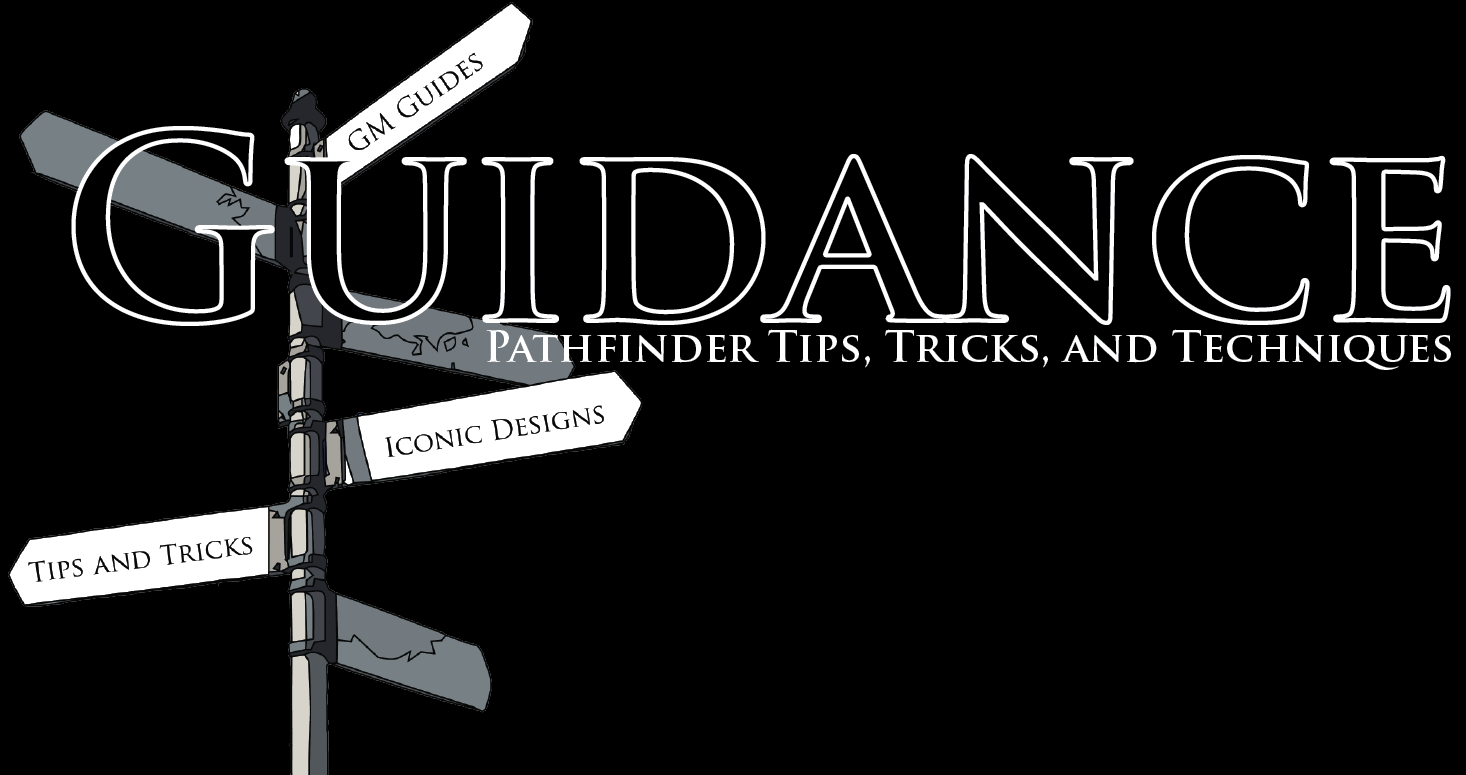
Alexander “Alex” Augunas, the Everyman Gamer, has been playing Tabletop Roleplaying Games since 2007 after a friend pretended to be his father in order to smuggle him out of high school so his gaming group had enough people to run a module. Today, Alex is the owner and publisher of Everybody Games, a co-host on Know Direction: Beyond and RPG Design Club, and a player on Stellar. You can follow Alex’s exploits on Twitter (@AlJAug), on Facebook, or on Patreon. Know Direction fans are also welcome to “@Alex” him on the Know Direction discord server!
Most of the ideas in this article are synthesized from my own thoughts, but many of the terms came from other, better established sources such as:
- Forms of Racism, Alberta Civil Liberties Research Centre
- Revisiting Race in Tolkien’s Legendarium: Constructing Cultures and Ideologies in an Imaginary World, Dr. Dimitra Fimi
- Tolkien and Dungeons & Dragons, The Artifice
- Was Tolkien Really Racist, The Conversationalist
- The Brute Caricature, Ferris State Museum

